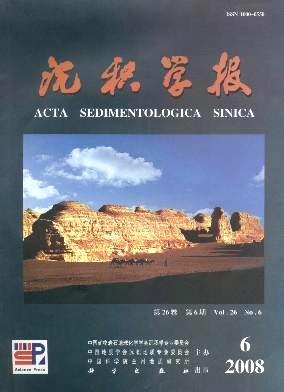Magnetic Properties of Loess Deposit in Eastern Qinling Mountains and An Investigation on the Magnetic Susceptibility Enhancement
- Received Date: 1900-01-01
- Rev Recd Date: 1900-01-01
- Publish Date: 2008-12-10
-
Key words:
- Eastern Qinling Mountains /
- loess deposit /
- rock magnetism /
- magnetic susceptibility /
- pedogenic process
Abstract: We have carried out a relatively complete rock magnetism investigation on loess deposit in the eastern Qinling Mountains, central China. 251 and 341 samples were obtained from Shangbaichuan (SBC) and Erlongshan (ELS) loesspaleosol sections at 10 cm and 5cm intervals, respectively. Magnetic susceptibility was measured on all these samples. Isothermal Remanent Magnetization (IRM) and Anhysteretic Remanent Magnetization(ARM) were measured on 24, 26 and 6 samples selected from SBC, ELS and Liuwan (LW) sections, respectively. The thermal properties and hysteresis properties were measured on 14, 14 and 6 samples from SBC, ELS and LW sections. The results indicate that most of loess and paleosol samples are dominated by ferrimagnetic minerals (magnetite and maghemites) and the paleosols have more ferrimagnetic minerals than that in the loess, but there are still some cases that antiferromagnetic minerals (hematite) play a more important role in the magnetic properties. Both of the concentration of ferrimagnetic minerals and antiferromagnetic minerals systematically increase with the intensified degree of pedogenesis. The finegrained ferrimagnetic minerals, which were formed in pedogenesis, are dominated by single domain and/or pseudosingle domain grains which contribute significantly to the magnetic susceptibility enhancement. The results reveal a strong linkage between the magnetic properties and the palaeoclimate. The rock magnetic properties of the three loesspaleosol sections are generally similar to that in the Loess Plateau, but with a minor difference. In addition, the rock magnetic properties among the three loesspaleosol sequences are slightly different; this may be caused by a warmer and more humid climate in this region.
| Citation: | ZHAO Jun. Magnetic Properties of Loess Deposit in Eastern Qinling Mountains and An Investigation on the Magnetic Susceptibility Enhancement[J]. Acta Sedimentologica Sinica, 2008, 26(6): 1052-1062. |






 DownLoad:
DownLoad: